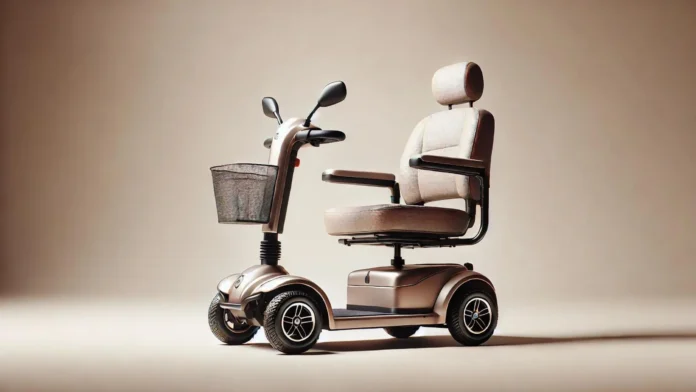I’ve always been the type to keep moving—whether it’s grabbing groceries or hitting the park with my dog. But when my knees started giving out a few years back, that freedom took a hit. I wasn’t ready to sit still, so I started looking into mobility scooter power options from 1800Wheelchair. What I found wasn’t just a way to get around—it was a ticket to stay in the game. High-powered mobility scooters aren’t basic rides; they’re packed with features that can open up your world again. Here’s what I learned about how they work and why they matter, laid out simple so you can see if they’re your fit.
Strong Motors for Real Distance
My old routine—store, park, friend’s place—adds up to a few miles daily. Walking that far was off the table, and I didn’t want to bug anyone for rides. The high-powered scooters from 1800Wheelchair caught my eye with motors pushing 400-600 watts. That’s enough juice to cover 10-20 miles on a charge, depending on the model. I tested one, and it got me across town and back without blinking.
Distance isn’t just a number—it’s your day. A strong motor means you’re not stuck close to home or sweating a dead battery mid-trip. If you’ve got places to be, check the range—some hit 25 miles. It’s about staying out there, not cutting things short.
Speed That Keeps Up
I’m not racing anyone, but I don’t want to crawl either. My first scooter topped out at 4 mph—fine for sidewalks, but it dragged on open paths. The high-powered ones I saw on 1800Wheelchair’s site go 5-8 mph, some even 15 mph. I tried a 7 mph model, and it kept pace with foot traffic—no more trailing behind.
Speed’s a freedom boost—you’re not the slow poke holding up the line. Look at your spots—busy areas need a little zip. Most let you tweak it down if 8 mph feels wild. It’s about moving at your life’s rhythm, not a snail’s.
Tires Built for Any Ground
My street’s flat, but the park’s got gravel trails, and my driveway’s a mess of cracks. A cheap scooter I borrowed once bogged down—tiny wheels, no grip. High-powered scooters from 1800Wheelchair come with bigger tires—8-12 inches—some with deep treads. I rolled over grass and bumps like they weren’t there.
Terrain matters—smooth floors are easy, but outside’s a test. Bigger, tougher tires mean you’re not stuck on pavement. If you’re hitting dirt, sand, or slopes, check the tread and size. It’s your pass to go where you want, not just where it’s flat.
Weight Capacity for Extra Loads
I’m no lightweight, and I haul stuff—groceries, a water jug, my pup’s gear. A standard scooter I looked at capped at 250 pounds—too close for comfort with my bags. The high-powered ones from 1800Wheelchair handle 300-400 pounds, some up to 500. I loaded one with 350 pounds—me plus extras—and it didn’t flinch.
Capacity’s about more than you—it’s your life on board. If you’re bigger or carry a lot, aim high—350 minimum. It’s peace of mind knowing it won’t groan under the weight. You’re free to pack what you need.
Battery Life That Lasts
Nothing’s worse than a ride dying halfway—happened to me once, stranded two blocks from home. These high-powered scooters use lithium or sealed lead-acid batteries, running 12-24 volts. Mine lasts 8 hours of stop-and-go—plenty for my day. 1800Wheelchair’s got models with swappable packs too, so I’m never caught short.
Battery life keeps you going—check the hours, not just miles. If you’re out long, look for 15-20 amp-hours or a spare option. It’s about rolling ‘til you’re done, not ‘til it quits. Charge it overnight, and you’re set.
Controls You Can Tweak
I’m not great with gadgets—too many buttons throw me off. The high-powered scooter I got has a simple joystick—push to go, pull to stop—plus a dial for speed. I set it low indoors, cranked it outside. Some from 1800Wheelchair even have reverse gears and horn buttons, which I’ve used to nudge my dog out of the way.
Controls matter—easy ones keep you in charge. Look for adjustable settings—speed, sensitivity—if you like dialing it in. It’s freedom to move how you want, not fight the machine.
Storage That Fits Your Space
My apartment’s small—no garage, just a corner by the door. The manual chair I tried folded tight—20 inches wide. The powered scooter’s bigger—30 inches, 50 pounds—and doesn’t collapse much. I shuffle it behind the couch, but it’s a squeeze. 1800Wheelchair offers some that break down into pieces, which helps.
Space is real—measure your spot. If it’s tight, check for foldable or detachable parts. High-powered means bulk, but some slim down enough. It’s about keeping your place livable, not cluttered.
Comfort for All-Day Use
I get stiff sitting too long—back aches, legs cramp. The high-poweredmobile scooter I picked has a padded seat, armrests, and a backrest I can tilt. I stayed out four hours—no pain. Cheaper ones I tried were hard benches—30 minutes, and I was done.
Comfort’s a must—test the seat, check adjustability. High-powered scooters lean plush—cushions, support—if you’re in it a lot. It’s freedom to stay out, not limp home sore. Look for extras like suspension if bumps are your norm.
Final Say: Power Up Your Way
High-powered mobility scooters from 1800Wheelchair aren’t just wheels—they’re a way to take your day back. For me, it’s the range, speed, and comfort—stuff that keeps me out there, not cooped up. They’re not tiny or simple—storage and batteries take planning—but the trade-off’s worth it if you want more than a short roll.
Figure your needs—distance, ground, space at home. Call 1800Wheelchair—they’ve got models galore and specs to match. Test one if you can—borrow or rent. It’s not about flash—it’s about moving free again. I’m out with my dog daily now, and that’s everything.
